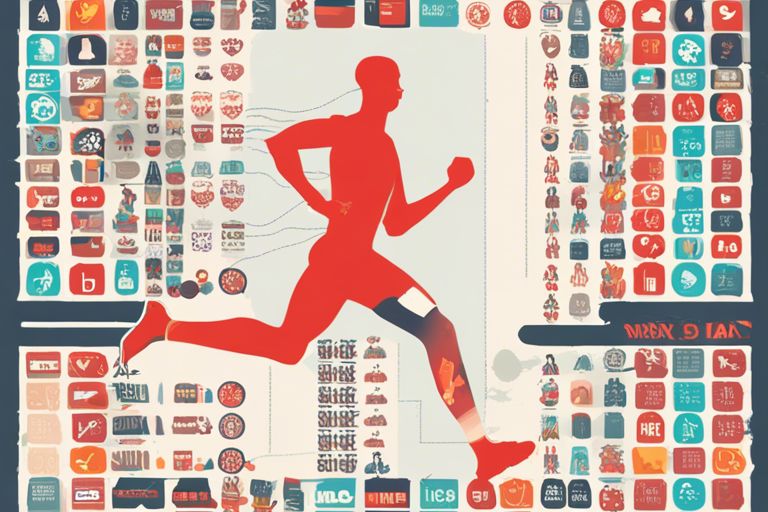Are you wondering if your running speed has an impact on the benefits you are reaping from your workouts? Many believe that the faster you run, the more benefits you will receive, but is this really true? In this informative blog post, we will dive into the science behind running speed and its effects on your overall health and fitness. You may be surprised to learn that the negative effects of running too fast can actually outweigh the positive benefits, and that finding the right pace for your body is crucial for maximizing the advantages of running. Keep reading to discover the truth about running speed and its impact on your fitness journey.
Understanding Running Benefits
To fully understand the benefits of running, it’s important to break down the different aspects of your health that can be positively impacted by this form of physical activity. Each component of your well-being can be affected in different ways, making running a comprehensive exercise for your body and mind.
Cardiovascular Health
When you run, you are essentially giving your heart and circulatory system a workout. The increased heart rate and improved circulation that comes with regular running can significantly reduce your risk of heart disease. Running also helps to lower your blood pressure and improve your cholesterol levels, making it an effective way to keep your cardiovascular system in top shape. Regular running is an excellent way to keep your heart healthy and reduce the risk of potentially life-threatening conditions.
Weight Management
Running is a highly effective way to manage your weight. It is a form of aerobic exercise that burns a significant number of calories, helping you maintain a healthy weight or lose excess pounds. The more intense and longer your runs, the more calories you’ll burn. Additionally, running can increase your metabolic rate, enabling your body to burn more calories even when at rest. By incorporating running into your routine, you can effectively manage your weight and improve your overall body composition.
Mental Well-being
Besides the physical benefits, running also has a positive impact on your mental well-being. It is a natural stress reliever that can help reduce feelings of anxiety and depression. When you run, your body releases endorphins, which are natural mood lifters. Additionally, running can improve your sleep quality, boost your self-esteem, and even enhance your cognitive function. Regular running not only benefits your body but also contributes to a positive mental state, helping you cope with the stresses of daily life.
Analysis of Running Speed
Any form of running offers a range of health benefits, but the speed at which you run can affect the specific advantages you gain. Let’s take a closer look at how the different running speeds can impact your health.
Defining Running Speed Categories
There are generally three categories of running speed: slow, moderate, and fast. Slow running is typically considered to be a pace where you can easily hold a conversation without being out of breath. Moderate running is a pace that increases your heart rate and breathing, but still allows you to speak. Fast running, on the other hand, is a pace at which you cannot easily hold a conversation and may struggle to breathe. These categories can vary depending on individual fitness levels, but they provide a general framework for understanding the different speeds at which you can run.
Effects of Different Speeds on Health Benefits
Running at a slow pace can still provide significant health benefits, including improved cardiovascular health, increased endurance, and stress reduction. However, the benefits of running at a moderate or fast pace include more efficient calorie burning, increased muscle strength, and greater cardiovascular conditioning. It’s important to note that while running fast may offer certain advantages, it also comes with a higher risk of injury, especially if you’re not properly conditioned for that type of speed. On the other hand, running at a slow pace may not provide as much of a challenge for your body, potentially limiting some of the potential benefits.
Optimizing Running for Maximum Benefits
For many people, running is an essential part of their fitness routine. It’s a fantastic way to stay in shape, improve cardiovascular health, and boost mood and mental health. However, to get the maximum benefits from your runs, it’s crucial to optimize your running routine.
Personalizing Running Intensity
When it comes to optimizing your running for maximum benefits, personalizing the intensity of your runs is key. The right intensity will help you achieve your fitness goals while minimizing the risk of injury. You should cater the intensity of your runs to your current fitness level and goals. For example, if you’re new to running, you might start with a mix of walking and jogging, gradually increasing the intensity as your fitness improves. On the other hand, if your goal is to improve your speed and endurance, incorporating interval training into your runs can help you achieve that.
Combining Speed with Duration and Frequency
Running speed does have an impact on the benefits you can get from your runs, but it’s not the only factor to consider. Combining speed with the duration and frequency of your runs is crucial for optimizing your running routine. Varying the speed, duration, and frequency of your runs can help prevent plateaus and keep your workouts challenging and effective. For instance, mixing up your runs with shorter, faster runs and longer, slower ones can improve your overall endurance and speed. Additionally, increasing the frequency of your runs, while being mindful of rest and recovery, can help you see greater improvements in your fitness level.

Debunking Myths About Running Speed
After addressing the benefits of running at different speeds, it’s time to debunk some common myths about running speed. These myths can often lead to confusion and misinformation about how running speed affects your health and fitness. Let’s take a closer look at some of these misconceptions and set the record straight once and for all.
Slow Running vs. Fast Running Myths
One common myth about running speed is that slow running is not as beneficial as fast running. This is simply not true. While it’s true that running faster can help you build more cardiovascular endurance and increase your overall speed, slow running has its own set of benefits. Slow running can improve your aerobic endurance, help you build a solid base for faster running, and reduce the risk of injury. It also allows you to enjoy the process of running without putting excessive stress on your body.
The Truth about Speed and Injury Risk
Another myth that often circulates is that running faster significantly increases your risk of injury. While it’s true that pushing your body to its limits can increase the risk of overuse injuries, running at a faster pace does not automatically mean you will get injured. In fact, running at a moderate to brisk pace can actually improve the strength of your muscles and bones, reducing the risk of injury in the long run. It’s important to note that proper warm-ups, cooldowns, and a gradual increase in speed and distance are crucial in preventing injuries regardless of your running speed.
Does running speed affect its benefits?
On the whole, running speed does have an impact on the benefits you will receive from your workout. While running at a faster pace can help you burn more calories and improve your cardiovascular fitness, it may also increase your risk of injury. Slowing down your pace can still provide numerous health benefits, including improved endurance and mental well-being, without placing as much strain on your body. Ultimately, the best approach is to find a balance that allows you to push yourself without compromising your safety and overall well-being. Remember that the most important thing is to listen to your body and adjust your running speed accordingly to ensure that you are reaping the maximum benefits without putting yourself at unnecessary risk.




